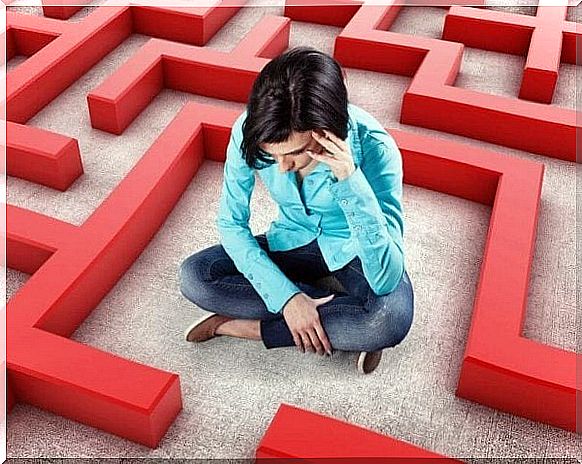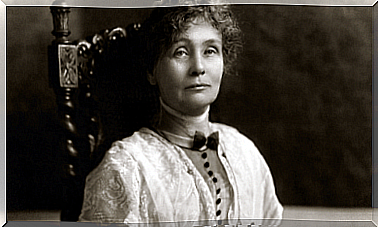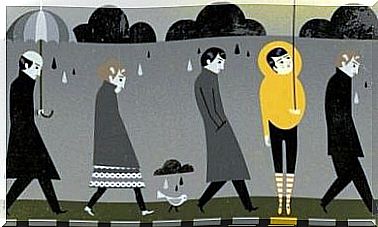Adrenaline; Performance And Activation Hormone

Adrenaline is what makes us comfortable when we exercise. It gives us butterflies in the stomach when we are attracted to someone and helps us react in dangerous situations.
In addition to helping with performance and activation, adrenaline has a dark side. It has serious side effects.
Adrenaline is a polyvalent substance like dopamine and oxytocin. It also acts as a neurotransmitter and affects our behavior more than almost any other hormone.
Adrenaline, for example, activates our survival instincts, but also gives us a tendency to addictive behaviors. It can provoke the kind of anxiety and chronic stress that many people suffer from.
Many crisis management professionals train their clients to handle their adrenaline properly. They do this by exposing them to physically and emotionally stressful activities and stimuli. These activities require them to regulate their adrenaline.
The goal is simple: Train them so they do not lose control, and teach them what to do so that the adrenaline becomes their friend, never their enemy.
Doing this and knowing all about what this hormone is capable of doing for our body and behavior is amazing. Let’s learn more about adrenaline .

Adrenaline: What is it and what does it do?
In 1982, Angela Cavallo of Lawrenceville, USA, was named Mother of the Year. The media called her after she was in the news all over the world. She did something that would be hard to believe if several witnesses had not seen it.
Her son, Tony, was in the garage working on his old Chevrolet when something terrible happened. The jack that held the car up suddenly broke down. The car fell on the young man and pinched him.
Angela Cavallo was 51 years old and she weighed a little over 60 kilos. She did not go to the gym, she was not a big woman and she had never lifted weights.
Nevertheless, when she saw her son’s feet under the car, she started shouting for the neighbors for help. When it became clear that no one was coming, she did not hesitate.
She ran to the 1300 kg heavy car and lifted it without hesitation for one second. She held it for several seconds so that the neighbors could come in and pull her unconscious son away from the car.
This amazing experience has two almost magical elements: a mother’s love and lots of adrenaline. Adrenaline allows us to do incredible things to survive and help others survive.
The activation hormone
Adrenaline belongs to the group of catecholamines along with norepinephrine and dopamine. It is produced by the adrenal glands, which lie just above the kidneys.
There is also a synthetic version of adrenaline, called epinephrine. It is created in a laboratory and is chemically identical to adrenaline. Therefore, epinephrine is very useful in medical emergencies for resuscitation.

To understand the mechanics behind the function of adrenaline, we can use the story of Angela Cavallo and her son:
- We perceive a threatening or dangerous situation (such as a car falling on our child). Our hypothalamus, which is responsible for our emotional responses, activates the parasympathetic system to provide a specific response to that stimulus.
- The hypothalamus also has a direct connection to the adrenal medulla. These glands are ready to release a large amount of adrenaline to activate us and influence our behavior.
Adrenaline uses concrete mechanisms to create action
Along with the release of adrenaline, a number of fine-tuned biological mechanisms are triggered. These mechanisms create the following reactions:
- We lose the sense of situation. That is, our brain tries to focus all our attention on just one thing. Everything else ceases to mean anything.
- On the other hand, the brain chooses which senses will be most useful. In fact, auditory exclusion is very common. In other words, we stop hearing so we can see better.
- Our pupils dilate almost instantly to let in more light so we can see better.
- Adrenaline does something else you might recognize. It dilates our blood vessels and increases our heart rate. This happens for a reason: to pump more blood around so that more oxygen gets to our muscles. Therefore, we get more strength and more ability to react with.
Here comes an interesting fact. Our brain commands the immune system to release large amounts of dopamine and pain-relieving endorphins.
This means that we do not feel pain if we are under great strain. Like Mrs. Angela Cavallo, who did not feel pain when she lifted a 1300 kilo car.

The positive and negative sides of adrenaline
Adrenaline does a lot of good things. It can stimulate us to overcome challenges. It can be as much fun as it is addictive.
Adrenaline helps us to adapt to any kind of stressful situation. It helps us when we practice risky sports. It allows us to do our best for an exam or enjoy a romantic date.
Shaking hands, a lump in the stomach, dilated pupils when we see the person we are attracted to… These are all effects of adrenaline.
Adrenaline makes us feel happy when we dance and have fun with other people. It also gives us the incredible feeling we get in a roller coaster or when we drive fast in a car.
As we can see, many of these types of behaviors have a risk aspect. It is when we put our foot back on the ground, unharmed after the experience, that we feel the euphoria and the immense satisfaction and release that comes with it.
Because of this, there are people who are addicted to adrenaline. This is the dark side we need to know more about.

Adrenaline addiction
Some people are attracted to the more dangerous side of extreme sports. Some really play with their lives. The root of this type of behavior (as many of us have probably seen) is sometimes more than a simple search for enjoyment and adventure.
This intense shot of adrenaline that they experience can also fill a void or mask emotions.
When we think of an addict, we immediately imagine someone who is addicted to hard drugs. They use them not so much to create joy, but to remove discomfort.
Nevertheless, we do not always talk so much about other forms of addiction. Adrenaline and constantly seeking out risks to feel alive is also an addiction.
As with other addictive drugs, it is common to need larger and larger doses to achieve the same effects as before. Our bodies develop tolerance over time, so addicts seek out even more risky and more extreme experiences so they can get the same buzz.
It is important to distinguish between an athlete who practices professional extreme sports in a responsible manner and one who does the same without thinking or considering the consequences of their actions.
In this sense, we could say that an addict is not thinking, he is just trying to satisfy a biological need.
Adrenaline and chronic stress
We have seen that adrenaline can become addictive. There is also another interesting negative aspect of adrenaline. It is the daily development of chronic stress.
Chronic stress is the direct result of continuous pressure and tension. When we do not handle it properly, it results in chronic stress. This emotional state comes from an accumulation of two specific hormones in the blood: adrenaline and cortisol.

When we experience difficult, uncomfortable situations that threaten our physical and emotional balance, our brain interprets it as a danger. This is where adrenaline comes into the picture, and this is where we need to act effectively.
But we do not always do that, and then it is that adrenaline accumulates and causes changes in our bodies (high blood pressure, fast heart rate, digestive problems).
Our health is threatened and we endanger our lives. It’s not something we can just push aside, nor should we postpone it until tomorrow or next week…
In conclusion, we can say that adrenaline fulfills its “magical” purpose as long as it is released at the right time. In these situations, it helps us to react, keep us safe, make us better at dealing with certain situations.
But if we need this feeling every single day or allow tension and fear to take over, adrenaline can have the worst possible effect: it can ruin our health.
References:
R. Kandel (2001). Principles of Neuroscience Madrid, LTC.
Hart, A (1995). Adrenaline and Stress. Thomas Nelson editors.
Bennett M (1999). “One hundred years of adrenaline: the discovery of autoreceptors”. Thieme Publishing Group.









